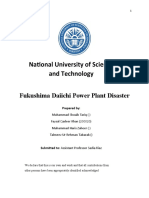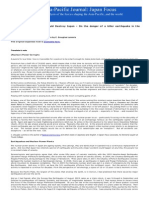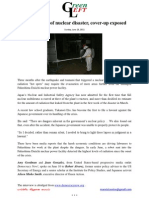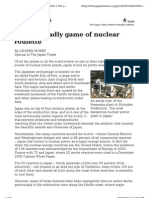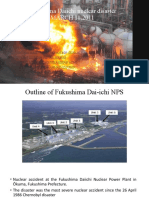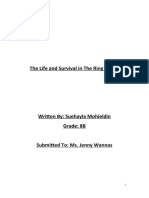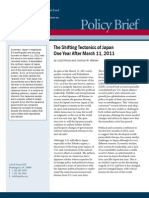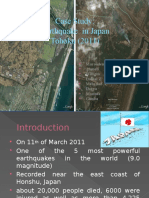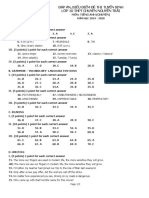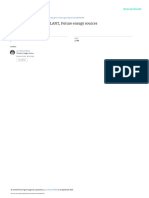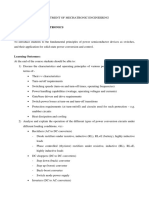Japan, A Year After The Disaster
Uploaded by
Phung Thanh ThomJapan, A Year After The Disaster
Uploaded by
Phung Thanh Thom09 March 2012 | MP3 at voaspecialenglish.
com
Japan, a Year After the Disaster
AP
A man prays beside
lanterns placed at
the waterfront in
Tokyo Bay to mark
the first anniversary
of the earthquake,
the fourth most
powerful ever
recorded, and
tsunami
This is IN THE NEWS in VOA Special English.
This Sunday is the first anniversary of the major earthquake and tsunami in
Japan. It led to one of the worst nuclear accidents ever.
The quake struck near the east coast of Honshu, Japan's main island. It was one
of the most powerful ever recorded -- a magnitude nine. A wall of water struck
the land.
Twenty thousand people died, mostly from the tsunami. More than two hundred
fifty thousand buildings were destroyed. Nearly four hundred thousand people
were left homeless.
Some rebuilding has begun. But many people are still in temporary housing.
Three reactors at the Fukushima-Daiichi nuclear power station suffered
meltdowns. During the crisis, some government officials even considered urging
people to leave Tokyo. VOA's Steve Herman reported on the disaster.
2
STEVE HERMAN: "I was among those near the atomic power facility on the
fifteenth of March when, unknown to the public, an estimated ten million
becquerels per hour of radioactive substances spewed from the three crippled
reactors. For days, I and millions of people in Japan absorbed significantly higher
doses of radiation than we normally would have been exposed to."
Radioactive material spread over an area that includes some of Japan's most
valuable farmland. Officials say eighty-one thousand hectares of farmland are too
heavily irradiated to let farmers plant rice. Vegetable, fruit and dairy farms also
are affected.
Japan's government has been seeking advice from foreign scientists about how to
reduce the radiation levels. Some of the scientists are from the former Soviet
Union, site of the nineteen eighty-six Chernobyl nuclear accident.
No one has died from radiation as a result of the accident in Japan. Some
scientists and government officials say radiation levels even close to the disabled
power plant are safe. But since the disaster, officials have faced growing distrust
among the Japanese public.
Japan also finds itself facing huge costs for cleaning up after the nuclear disaster
and for paying damages to victims. Before the accident, nuclear power produced
thirty percent of Japan's energy needs. Now some people think the accident will
be the end of the nuclear power industry in the world's third largest economy.
Thorne Lay is a seismologist with the University of California, Santa Cruz. He says
engineers had underestimated the chances that a great wave could drown the
emergency power systems at the Japanese plant.
THORNE LAY: "Those are mostly design weaknesses that a good engineering
think-through might say, let's put the backup power at very high elevations so
that it could not possibly get drowned out."
Mr. Lay says scientists are better able to predict earthquake risks in some areas
than they were in the past. Still, he says, they cannot provide decision makers
with all the answers.
THORNE LAY: "We will try to our best to give early warning if that's possible and
set up emergency response systems, but ultimately individuals have to prepare
themselves."
In the United States, a nuclear plant is being built in Georgia. This is the
country's first new one since the Three Mile Island nuclear accident in
Pennsylvania in nineteen seventy-nine.
3
Safety is not the only concern. The cost of building a nuclear plant and producing
electricity from it is much higher than other sources of power.
And that's IN THE NEWS in VOA Special English. I'm Steve Ember.
___
Contributing: Lisa Bryant, Steve Herman and Rosanne Skirble



